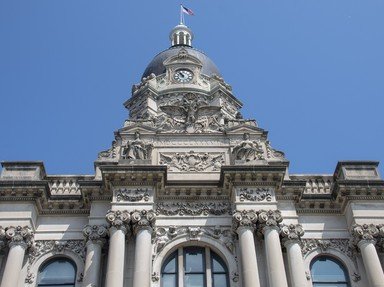Quiz Answer Key and Fun Facts
1. During and after WW1, a wave of xenophobia swept over the United States. Several states passed laws criminalizing the teaching of foreign languages in both public and parochial schools. One of those states was Nebraska where, in 1920 in a one-room schoolhouse, Robert Meyer defied the law and taught German to a 10-year-old boy. He was arrested and convicted. Nebraska appellate courts upheld the conviction. Meyer filed a writ of certiorari with the U.S. Supreme Court. What precedent was set by the Court's ruling in Meyer v Nebraska?
2. Gitlow v. U.S. (1925) was a landmark decision handed down by the U.S. Supreme Court because it was the first case to apply the First Amendment's Freedom of Speech clause to the states. By doing so, the Court opened the door for the inclusion of other portions of the Bill of Rights to be applied to the states. What is this "doctrine" called?
3. Roscoe "Fatty" Arbuckle's rise from a farm in Kansas to stardom in Hollywood was astronomical. Having weighed 13 pounds at birth, he weighed 266 pounds in 1921 when he threw a party at a San Francisco hotel. A young starlet named Virginia Rapp attended and was later found dead in Arbuckle's room. Arbuckle was arrested and charged with manslaughter. Which of the following statements about the subsequent trial is FALSE.
4. What law was John Scopes, a high school science teacher, accused of violating in Dayton, Tennessee in 1925?
5. In Carroll v. U.S. the Court established the doctrine of "hot pursuit". True or false?
6. Two married women murdered their boyfriend/husband in Chicago in 1924. Both were acquitted. Both trials were covered by the same Chicago Tribune reporter. Who was the reporter who went on to become a playwright?
7. In 1920 Nicola Sacco and Bartolomeo Vanzetti, anarchists and Italian immigrants, were arrested for attempting to overthrow the U.S. Government. They were convicted and sentenced to death.
8. In 1924 Nathan Leopold and Richard Loeb were arrested and charged with the kidnapping and murder of 14-year-old Bobby Franks. Both Leopold and Loeb came from upper class families, attended the University of Chicago and were intellectually gifted. Their "motive" was to commit the "perfect crime". Which of the following statements is UNTRUE.
9. The administration of Warren G. Harding is synonymous with political corruption. The most well-known example is the Teapot Dome Scandal. The subsequent trial resulted in the conviction of what Harding administration official?
10. An Oregon law held that children must attend public schools. This law effectively banned children from attending private and parochial schools. The Supreme Court found the law to be unconstitutional. What was the name of the case?
Source: Author
ncterp
This quiz was reviewed by FunTrivia editor
stedman before going online.
Any errors found in FunTrivia content are routinely corrected through our feedback system.
